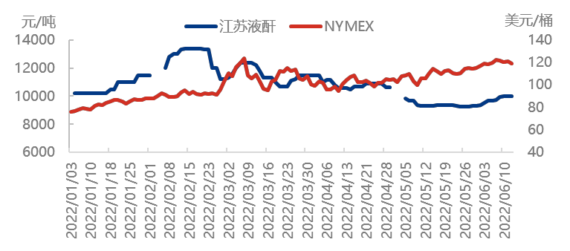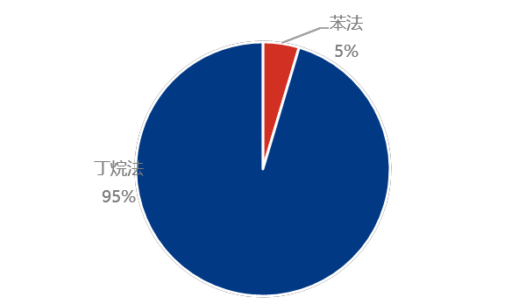Introduction: In June, the centralized execution of foreign trade orders for maleic anhydride significantly reduced the supply of tradable solid and liquid anhydride in the market. Maleic anhydride finally broke the deadlock and entered a rising channel. Taking Jiangsu molten MA as an example, it has risen by 700 yuan/ton within the month. An increase of 7.53%. The current price of maleic anhydride has returned to the rising channel, but how long can this price rise last?
At present, maleic anhydride buyers pay more attention to crude oil and the follow-up progress on the supply and demand side.
From the perspective of crude oil, can high prices continue? What is the linkage of chemicals?

From the perspective of high oil prices, the conflict between Russia and Ukraine has caused concerns about crude oil supply, which has also caused crude oil to continue to stand at the $100-120/barrel mark. In contrast, the geopolitical support for high prices continues. Although European expectations that the global economy will be weak, the summer travel season in the United States is coming, and Ukraine has voluntarily closed the Russian natural gas transfer station to Europe. The transit crisis has exacerbated the “gas shortage” in Europe, which may further drive the demand for crude oil, which will also support the oil price to remain at a high level and continue in the short and medium term.
In terms of linkage with chemicals, taking maleic anhydride as an example, the trend of NYMEX and maleic anhydride have diverged since the first half of the year. The overall oil price has shown an upward trend, while maleic anhydride has been downward. The problem is that the pressure of the high cost of bulk commodities caused by high oil prices continues. Although basic chemicals have been followed up, the terminal linkage is still insufficient. Although the recovery of the terminal market in the first half of the year also had resistance from the epidemic in many places, with the unblocking of Shanghai in June, the force majeure impact of the epidemic gradually eased. Still, the resin industry chain saw a slow recovery of terminals, limiting the overall industry chain—resume operation. Therefore, high oil prices only have psychological support for the market and have a little boost on the demand side.
In terms of supply, what is the supply trend of maleic anhydride?

Since May, subject to high-cost pressure, some maleic anhydride makers, especially those who adopt the benzene process, have to shut down for maintenance, and the capacity utilization rate is still declining. From the perspective of the current operating capacity of maleic anhydride, the benzene process accounts for only 5%, and the butane process accounts for as high as 95%. In the short term, the benzene process will continue to face high-cost pressure, so it will be difficult to restart operation in a short time so that the butane process supply will maintain a high supply level.
In June, maleic anhydride was in a seller’s market. On the one hand, it was supported by the execution of export orders. On the other hand, although Qixiang added 200,000 tons of production capacity, the stopped production capacity of benzene-based maleic anhydride has reached 140,000 tons, ultimately resulting in no significant increase in quantity. Therefore, under the premise that the main factories focus on the execution of export orders, the market inventory is limited, so the sellers, especially the factories, can control the price, which has led to a surge in maleic anhydride.
When will the supply of maleic anhydride increase?
From June to July, the domestic supply of maleic anhydride is unlikely to increase significantly. Currently, the benzene process maleic anhydride is difficult to resume production, and Qixiang’s old maleic anhydride plant is also under inspection. Therefore, the operating capacity of Qixiang’s maleic anhydride will be maintained at around 300,000–350,000 tons before the middle and late July. It is difficult for the supply of maleic anhydride to increase significantly, which also means that the risk of the downward price of MA is low.
After most of the resin raw materials have risen, the resin is also slowly rising. Regarding the current cost and supply-side performance, styrene, maleic anhydride, phthalic anhydride, and malonic acid can fall back narrowly, and the supply and demand sides are still in conflict. From the perspective of maleic anhydride, the current supply can still meet domestic demand. For the downstream demand, market participants still have confidence in the recovery of the terminal due to favorable policy support. Whether the MA makers can continue to take the initiative in the follow-up, it is necessary to pay attention to when the demand for resin recovers significantly.